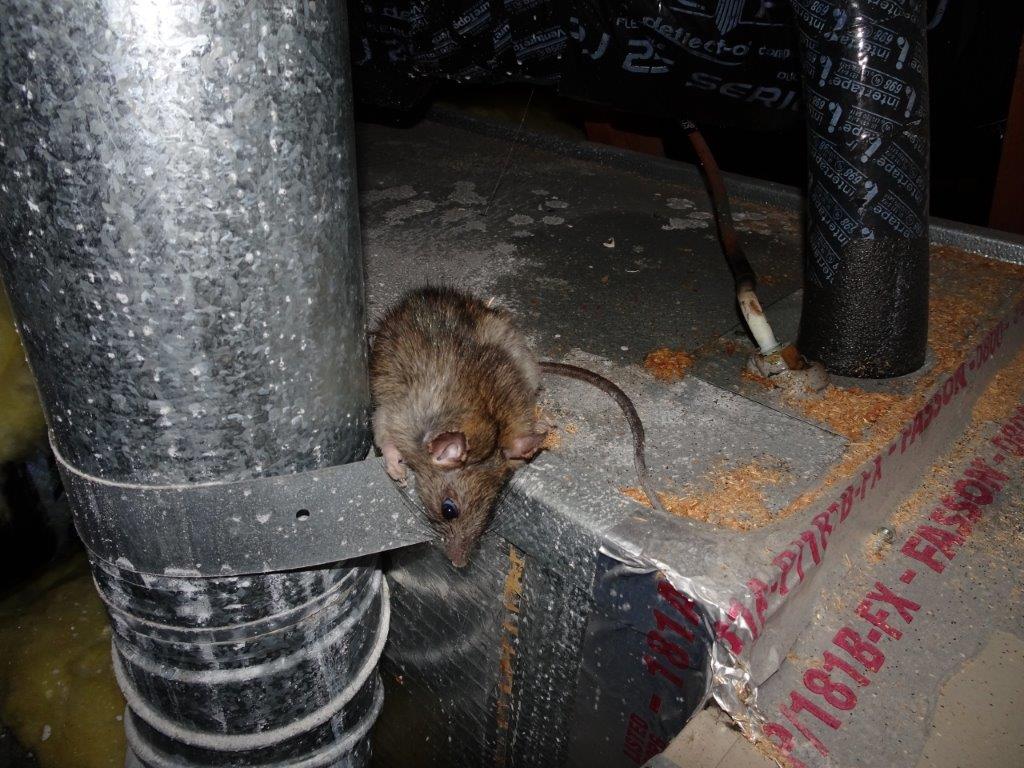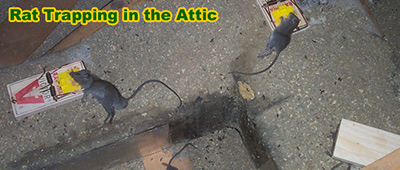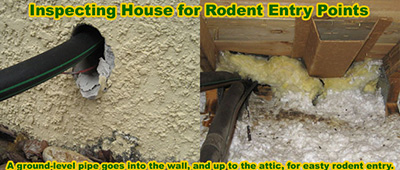Rats only need a hole the size of a quarter, or a gap that is about 5/8 inch to gain access to your house. You have to check many areas of the building -
in fact, the whole building, to find all the possible entry spots.
Check every vent - gable vents, roof vents, ground-level crawl space vents, even the laundry vent. Check all doors and windows. Check every part of the roof,
especially the fascia, and wherever an eave meets the roof. Check all roof lines. If you have a tile roof, you've got a TON of entry spots. Check plumbing
stacks, air conditioner chases, power line entry points, basically, EVERY SQUARE INCH OF THE HOUSE.
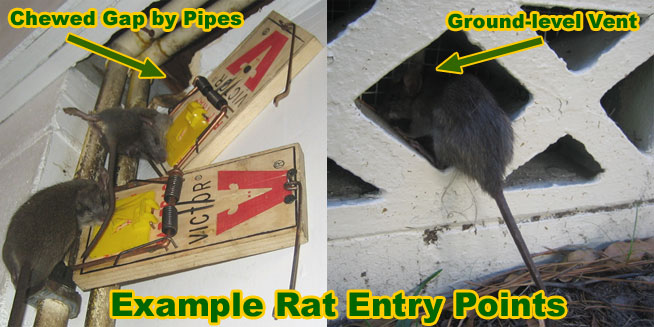
Here we have rats following pipes up into a poorly sealed wall-ceiling corner. If rats get a whiff of attic air, they'll chew the hole open wider. On the right side, we see a rat trying to get into a ground-level crawl space vent. Once under the house, they can almost always find a way up into the walls, via architecture gaps or where holes are cut to allow plumbing pipes through. And yes, rats can enter a house via plumbing and even sewer pipes, and come up through the toilet.
FOUR GOOD EXAMPLES OF COMMON ENTRY HOLES
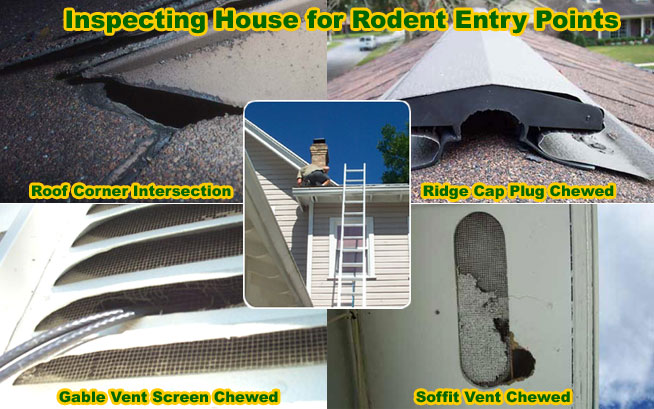
Here are four small examples of easy-to-spot rat entry points. In the upper-left, there's a hole that's been chewed out at the end of a gable intersection with a roof. Roof edges, and anywhere where roof meets roof is a rat entry hot spot. In the upper-right, a very obvious chewed-open ridge cap plug. The open ridge cap goes right into the attic, of course. This is a popular rat and mouse entry point. In the lower-left, it's some wires going into a gable vent, and only a flimsy screen blocks access. You can see how easy it is for the rats to chew through and slip into the attic. In the lower-right, it's a chewed out hole by a soffit vent. Never mind that the cover is in place, rodents can gnaw a hole open in the wood.
HOW MIGHT THEY GET INTO THE LIVING SPACE OF THE HOUSE?
Usually where a hole has been cut in a wall to allow a wire or duct through. Probably the most common area is the power supply behind the oven. I've seen that common rat entry hole many
times. They just crawl down the wires from the attic, and there's already a hole there to allow the wire through, and then they chew it open wider to get into the house. Heck, the oven
already has food smell, as does the kitchen, so this is a prime area for rats to enter the house through.
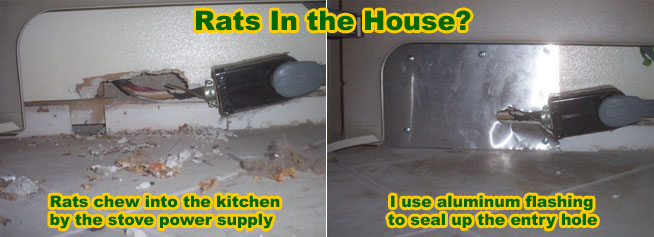
I've also seen rats enter via the washer/dryer vents, loose attic hatches, and other areas. Hunt around!
A SIMPLE EXAMPLE
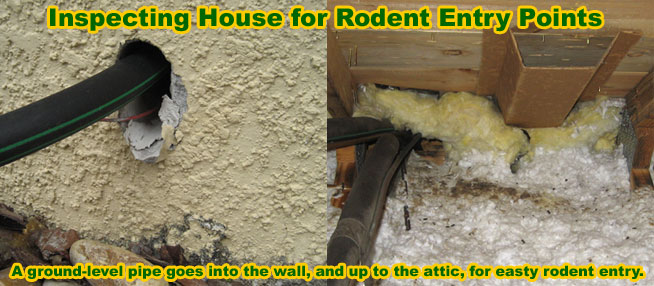
The above photo reveals a pretty easy rat entry point. You can see what happens. Rats love to find small holes and climb pipes and wires up walls and into the attic. But most entry points are not this obvious or easy to reach. The location of the rats noises and sounds can help you pinpoint entry holes.
THE SAME APPLIES TO MOUSE REMOVAL
Although I wrote this site with rats in mind, such as the Roof Rat and
Norway Rat, the same principles apply to other rodents, such as the
house mouse. Mice behave very similarly to rats, they're just smaller. And what if you have mice or rats in your car?
That is a case in which the entry areas are too large, and impossible to block. You have to keep the car in a garage.
Email me if you have any questions about common mouse entry points, how do mice get into a house, how do rats enter a building, and so on.
Read other educational articles:
Fastest way to get rid of rats
What equipment is needed to trap a rat?
How to inspect a house for rat entry holes
Do rats enter a building through the plumbing?
